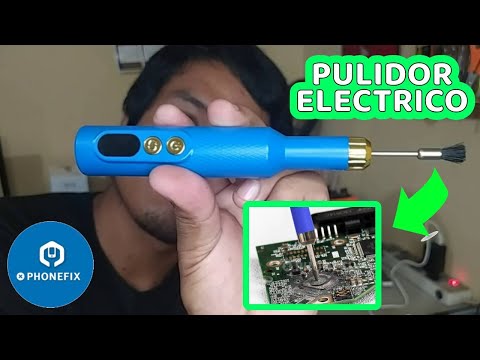Imagine that your iPhone accidentally falls into water. At that moment, does your heart instantly hang in your throat? You know, water is the number one "natural enemy" for Precision Electronic Devices, and the iPhone integrates many complex and precise components. Once it gets into water, it is very easy to suffer serious damage. Don't panic! Next, this article will teach you how to deal with the problem of iPhone getting into water, so that you can easily resolve the crisis.
Be clear about what actions you must not do:
1. Don't press the power button immediately: If you press the power button immediately, it may cause a short circuit and damage the phone. It is best to turn off the phone to prevent any current from flowing through it.

2. Don't use a hair dryer or high heat: Although using hot air may evaporate the water quickly, excessive heat may damage the internal components of the phone, especially the iPhone Battery.
3. Don't shake the phone: Shaking the phone may allow water to enter other parts of the phone, such as the camera, headphone jack, etc., causing greater damage.
4. Don't try to charge: Don't try to plug in the Charger before the phone is completely dry. Moisture can cause the battery to short-circuit or even catch fire.

5. Do not wipe the screen with a paper towel or cloth: Although wiping the surface may seem clean, this may push water into the gaps of the phone and cause more damage.
6. Do not disassemble the phone yourself: Even if you know how to disassemble the phone, disassembling it yourself may cause damage to other parts. Disassembly may also void the warranty.

7. Leave it alone: If the phone is soaked in water and is not handled in time, the water will remain inside the phone for a long time, causing the metal parts to rust and corrode the circuit board. Over time, even if it is repaired later, the performance of the phone may be much worse than before.
2. Actions you need to take immediately
Ⅰ. Cut off the power supply immediately
Once the iPhone is out of the water, or shake off the surface liquid, be sure to press and hold the power button to turn off the phone. Timely power off can effectively prevent Short Circuits caused by water seepage inside the device, which in turn causes major malfunctions. After turning off the phone, follow the subsequent steps.
Ⅱ. Remove the phone case
Water is easily trapped in the gap between the case and the iPhone. Over time, water may seep into the SIM card tray or damage the waterproof tape, allowing water to enter the phone. In addition, some substances in the water may leave a gray residue that is corrosive. Therefore, remove the outer iPhone Case in time before proceeding to the next step.

Ⅲ. Wipe the body carefully
Use a soft towel or cotton cloth to carefully wipe the body of the iPhone and absorb the surface moisture. Pay special attention to parts such as the volume button to remove attached water droplets.
Ⅴ. Remove the SIM card tray
After removing the phone, removing accessories, and drying the outside of the phone, especially openings such as the charging port and headphone jack, if your device uses a physical SIM card, you need to remove the iPhone SIM Card Tray. Although the card tray is usually designed to be waterproof, water may still get in. Removing the card tray can not only reduce potential damage to the phone, but also may avoid replacing the SIM card with the carrier.

Ⅵ. Try to drain excess water
If you find water droplets in the corners of the phone display, around the ports, buttons, etc., you can turn the iPhone Screen down to let the excess water flow out. Sometimes it is difficult to drain it out completely, but it is still worth a try. After a period of inactivity, water may accumulate near the opening. At this time, the water has not penetrated deeply into the device and is easier to drain.
Ⅶ. Use raw rice to absorb water
Raw rice has strong water absorption and can help absorb water from the phone. Place the phone in a container filled with raw rice, make sure the phone is completely covered with raw rice, turn it off and let it stand for about 48 hours. However, this method is risky, and rice grains or dust may enter openings such as the charging port. If the phone has a certain dustproof function, you can try this method, but it is not guaranteed to be effective.
Ⅷ. Use silica gel bags to absorb water
Common small silica gel bags can also be used to absorb water from the phone, and are safer than raw rice and will not block the phone port. These silica gel bags were originally designed to prevent products from getting wet, and the water absorption effect is sometimes more significant.

Ⅸ. Drain water from the speaker hole
If the iPhone has been in the water for a short time, you can try to turn on the phone and use the free method to drain the water from the iPhone Speaker grille. However, be sure to turn on the phone safely to avoid further damage.
Ⅹ. Test after waiting patiently
After completing the above steps, keep the iPhone turned off for 24-36 hours. After that, if it can start normally, use it for a few minutes to check whether the touch screen, speakers, headphones, and charging port functions are normal. After confirming that everything is correct, insert the SIM card, install the case, and continue to use the phone.

Note: If the iPhone still cannot be turned on after trying all the above methods, this may indicate that the motherboard has a serious fault. At this time, in order to avoid causing more serious damage, it is not recommended to operate on your own. It is recommended to contact a professional precision repair organization or an official iPhone certified repair company as soon as possible to conduct a comprehensive inspection and repair of the phone with the help of professional tools and technology.
When your iPhone still cannot be turned on after a series of self-help operations, it can be basically determined that the motherboard has suffered a serious fault. The motherboard is the core of the iPhone, integrating a large number of highly sophisticated chips and complex circuits. Once water enters, the tiny solder joints, capacitors, and resistors on the iPhone Motherboard may be damaged by short circuits and oxidation.
At this time, many friends may try to repair it by themselves, but due to the lack of professional tools and technology, they often not only fail to solve the problem, but may also cause secondary damage to other components, further increasing the difficulty and cost of repair.

Professional repair organizations have high-precision tools suitable for iPhone repairs, such as High-power Microscopes, professional BGA rework stations, digital oscilloscopes, etc. When testing the motherboard, the microscope can clearly observe the extremely small damage points on the motherboard, and the Oscilloscope can accurately detect whether the circuit signal is normal. In addition, experienced repair masters are very familiar with the design and construction of the iPhone motherboard, and can quickly locate the problem based on the fault phenomenon and carry out targeted repairs.
When your iPhone encounters such a difficult problem, if you have some experience and confidence in self-repair, China Phonefix can provide you with professional tools suitable for iPhone repair to help you carry out the repair work. But if you are worried that you can't properly solve the problem, in order to avoid additional damage, it is recommended that you choose an officially authorized iPhone repair outlet. With rich experience and professional technology, professional repair personnel can comprehensively detect equipment failures and provide efficient and reliable repair services to ensure that your iPhone is restored to its original state.












